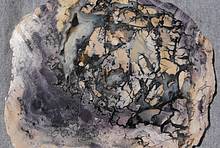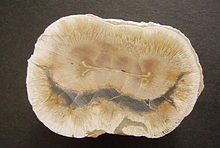Home PageAbout MindatThe Mindat ManualHistory of MindatCopyright StatusWho We AreContact UsAdvertise on Mindat
Donate to MindatCorporate SponsorshipSponsor a PageSponsored PagesMindat AdvertisersAdvertise on Mindat
Learning CenterWhat is a mineral?The most common minerals on earthInformation for EducatorsMindat ArticlesThe ElementsThe Rock H. Currier Digital LibraryGeologic Time
Minerals by PropertiesMinerals by ChemistryAdvanced Locality SearchRandom MineralRandom LocalitySearch by minIDLocalities Near MeSearch ArticlesSearch GlossaryMore Search Options
The Mindat ManualAdd a New PhotoRate PhotosLocality Edit ReportCoordinate Completion ReportAdd Glossary Item
Mining CompaniesStatisticsUsersMineral MuseumsClubs & OrganizationsMineral Shows & EventsThe Mindat DirectoryDevice SettingsThe Mineral Quiz
Photo SearchPhoto GalleriesSearch by ColorNew Photos TodayNew Photos YesterdayMembers' Photo GalleriesPast Photo of the Day GalleryPhotography
╳Discussions
💬 Home🔎 Search📅 LatestGroups
EducationOpen discussion area.Fakes & FraudsOpen discussion area.Field CollectingOpen discussion area.FossilsOpen discussion area.Gems and GemologyOpen discussion area.GeneralOpen discussion area.How to ContributeOpen discussion area.Identity HelpOpen discussion area.Improving Mindat.orgOpen discussion area.LocalitiesOpen discussion area.Lost and Stolen SpecimensOpen discussion area.MarketplaceOpen discussion area.MeteoritesOpen discussion area.Mindat ProductsOpen discussion area.Mineral ExchangesOpen discussion area.Mineral PhotographyOpen discussion area.Mineral ShowsOpen discussion area.Mineralogical ClassificationOpen discussion area.Mineralogy CourseOpen discussion area.MineralsOpen discussion area.Minerals and MuseumsOpen discussion area.PhotosOpen discussion area.Techniques for CollectorsOpen discussion area.The Rock H. Currier Digital LibraryOpen discussion area.UV MineralsOpen discussion area.Recent Images in Discussions
Identity HelpIndustrial or basaltic ?

8th May 2012 21:46 UTCAnonymous User
The piece under a microscope shows crystals on the concretions including what looks like hematite, and there are hair like white formations in some of the darker stuff.
8th May 2012 22:05 UTCRock Currier Expert

8th May 2012 22:40 UTCAnonymous User

8th May 2012 22:49 UTCAnonymous User

8th May 2012 23:19 UTCAnonymous User

8th May 2012 23:25 UTCAnonymous User
-------------------------------------------------------
> Unless there are very recent basaltic flows in
> that part of England it look like you may have
> found a piece of industrial slag. Could it be possible that becouse the dyke never reached the surface 57 mya the stuff it came into contact with was preserved to look recent ?

9th May 2012 00:18 UTCD Mike Reinke
9th May 2012 01:09 UTCPaul Brandes 🌟 Manager
9th May 2012 02:41 UTCRock Currier Expert

9th May 2012 06:45 UTCBecky Coulson 🌟 Expert
Welcome to Mindat. This is slag - both coal and ironstone furnaces produce slag like this, and ironstone was mined all around that area of Yorkshire. Yes, hairs that look like Pele's hair are found in slag. In fact, modern mineral wool is produced using slag by mimicking the formation of Pele's hair: air is blown over molten slag, in the same manner that winds blow over molten basalt in Hawaii. The Cleveland dyke shows microscopic amounts of glass in the groundmass, but nothing tachylitic (glassy like obsidian) has been found, as far as I know. Becky

9th May 2012 21:24 UTCAnonymous User

9th May 2012 21:31 UTCAnonymous User
-------------------------------------------------------
> Hello Heath,
> Welcome to Mindat. This is slag - both coal and
> ironstone furnaces produce slag like this, and
> ironstone was mined all around that area of
> Yorkshire. Yes, hairs that look like Pele's hair
> are found in slag. In fact, modern mineral wool
> is produced using slag by mimicking the formation
> of Pele's hair: air is blown over molten slag, in
> the same manner that winds blow over molten basalt
> in Hawaii. The Cleveland dyke shows microscopic
> amounts of glass in the groundmass, but nothing
> tachylitic (glassy like obsidian) has been found,
> as far as I know. Becky Thanks for that becky ps its Cleveland not Yorkshire ;-) We are proud of our older place name here.

9th May 2012 21:39 UTCAnonymous User
-------------------------------------------------------
> It looks slaggy to me Heath, and slag is very
> common and light weight,so it sits on top. Notice
> all the air bubbles. Only pumice has air bubbles,
> if stuff really is 500myo, geologic forces tend
> to do away w/ air bubbles. plus, if it were
> weathered any number of years, the miosture at
> earths' surface would leach out some iron, and
> make the rock look brown. The ropy-ness ( a
> word?) would seem to me to be the molten glass in
> the slag, not exactly pahoe pahoe lava like in
> Hawaii. Around here, slag is used as ballast in
> the railroad bed, especially under the
> not-so-heavy commuter train tracks. Just my guess Thanks Mike yes we used it round here to reclaim land for the docks. and it covers lots of the tracks around here. But it don't look like this stuff or weigh nearly as much maybee its some kind of slag ive never walked on before ?
> for you.
10th May 2012 19:17 UTCUwe Kolitsch Manager

10th May 2012 21:09 UTCAnonymous User

11th May 2012 04:39 UTCD Mike Reinke
It is probably heavy because of the iron, SG of over 7. Anything dark, esp. as dark as that piece, i chalk up to iron. Does this sound plausible?

11th May 2012 21:18 UTCAnonymous User




Mindat.org is an outreach project of the Hudson Institute of Mineralogy, a 501(c)(3) not-for-profit organization.
Copyright © mindat.org and the Hudson Institute of Mineralogy 1993-2024, except where stated. Most political location boundaries are © OpenStreetMap contributors. Mindat.org relies on the contributions of thousands of members and supporters. Founded in 2000 by Jolyon Ralph.
Privacy Policy - Terms & Conditions - Contact Us / DMCA issues - Report a bug/vulnerability Current server date and time: April 23, 2024 21:56:29
Copyright © mindat.org and the Hudson Institute of Mineralogy 1993-2024, except where stated. Most political location boundaries are © OpenStreetMap contributors. Mindat.org relies on the contributions of thousands of members and supporters. Founded in 2000 by Jolyon Ralph.
Privacy Policy - Terms & Conditions - Contact Us / DMCA issues - Report a bug/vulnerability Current server date and time: April 23, 2024 21:56:29











